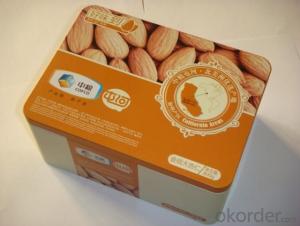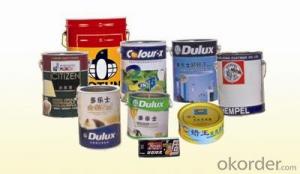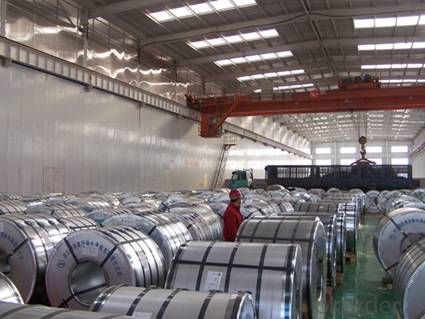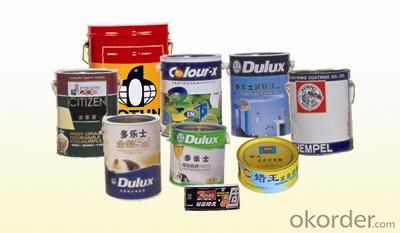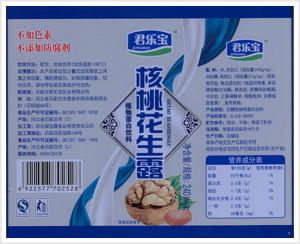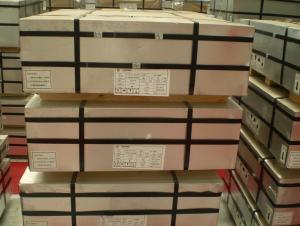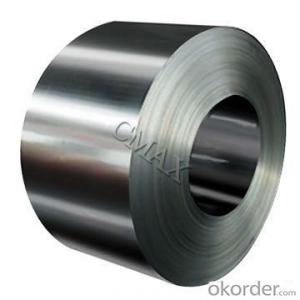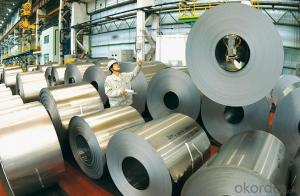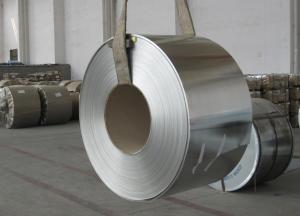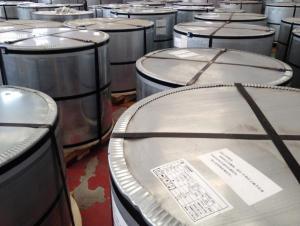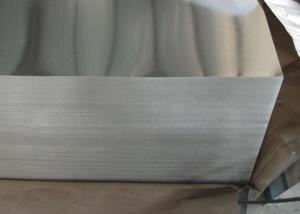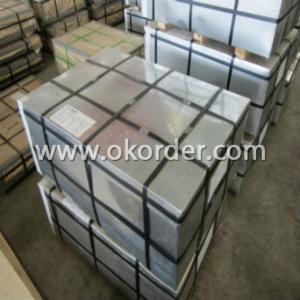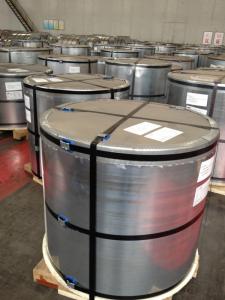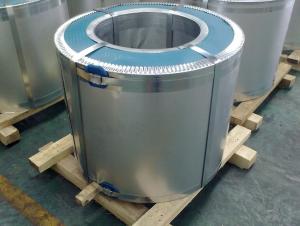MR Tinplate GIS G3303, Stone Finish, Dried Fruit Usage
- Loading Port:
- China main port
- Payment Terms:
- TT OR LC
- Min Order Qty:
- 25 m.t.
- Supply Capability:
- 40000 m.t./month
OKorder Service Pledge
OKorder Financial Service
You Might Also Like
1.Usage
Tinplate is widely used for making all types of containers, containing industrial usage such as paint can, oil can, aerosol cans etc., and food cans like milk powder cans, tomato paste can, dry food cans etc.
2. Quality
As a state owned company and a large tinplate supplier in China, our tinplate quality ranks 1st level in China, similar to Bao Steel, Posco etc.
3. Specification
standard: GB/T2520, JIS G3303, DIN EN10202
Material: MR /SPCC
Thickness available: 0.16-0.50MM
Width available: 600~1050MM
Temper grade: T1 – DR8
Tin coating: ordinary 2.8g/2.8g, 5.6g/5.6g and others
Package: sea worthy export package.
Applications: Tin can for chemicals & paint cans, industrial cans, food cans
4. Our factory photo & equipments

5. Our Markets:
now our tinplate has been sold to more than 50 countries, including Europe country, Gulf Area, South American, South Afric etc.
6. Our Overseas Wareouses:
Furthermore, in the year 2014, we have more than 10 overseas warehouses all over the word, located in KSA, UAE, Oman, Russia, Kuwait, Qatar, Oman, Chile, Brazil etc.
7. FAQ
a. what's the annual output?
about 500,000 tons per year.
b. where's the raw matrial from?
our hot rolled coil is purchased from Capital Steel and other state owned mill, with quite good quality.
c. how long is the delivery time?
normally for SPCC about 45~55 days, while 65~75 days for MR material
d. how to control the quality during production process?
inside our workshop, we have MES syestem. It realizes the optimization of the production procedure in the workshop. It could record each step of the whole production procedures, and if some problem appears, factory could easily found and take action, it’s quite helpful to monitor and control the quality.
- Q: How does tinplate packaging contribute to product protection against breakage?
- Tinplate packaging contributes to product protection against breakage by providing a durable and sturdy barrier between the product and external factors. The metal material of tinplate packaging offers excellent resistance to impact, preventing breakage or damage during handling, transportation, and storage. Additionally, tinplate packaging can be designed with protective features such as cushioning or shock-absorbing mechanisms to further enhance its ability to safeguard the product from potential breakage.
- Q: How does tinplate packaging handle exposure to moisture?
- Tinplate packaging has excellent resistance to moisture, making it highly suitable for protecting products from humidity and preventing damage caused by exposure to moisture.
- Q: How is tinplate coated with protective lacquer?
- Tinplate is coated with a protective lacquer through a process called coil coating. This involves applying a thin layer of lacquer onto the surface of the tinplate using a roller or spray method. The lacquer acts as a barrier, protecting the tinplate from corrosion, oxidation, and other environmental factors, ensuring its longevity and durability.
- Q: How is tinplate coated for toys and games?
- Tinplate is typically coated for toys and games using a process called electroplating, where a thin layer of tin is deposited onto the surface of the metal. This electroplating technique helps enhance the appearance, durability, and corrosion resistance of tinplate, making it suitable for various toy and game applications.
- Q: Can tinplate packaging be used for household products?
- Yes, tinplate packaging can be used for household products. Tinplate has excellent durability, corrosion resistance, and can be easily shaped into various forms. It is commonly used for packaging food, beverages, and other household items such as cleaning products, cosmetics, and personal care items.
- Q: What are the health and safety concerns associated with tinplate?
- Tinplate, a thin steel sheet coated with a layer of tin, can present some health and safety concerns. One primary concern is the potential for tin contamination in food or beverage products stored in tinplate cans. Prolonged exposure to high levels of tin can lead to health issues such as gastrointestinal problems, kidney damage, and even neurological disorders. Additionally, the manufacturing process of tinplate involves the use of chemicals and substances that may pose risks to workers, such as potential inhalation hazards or skin irritation. Proper handling, storage, and adherence to safety guidelines are crucial to minimize health and safety risks associated with tinplate.
- Q: Can tinplate be used for pharmaceutical packaging?
- Yes, tinplate can be used for pharmaceutical packaging. Tinplate is commonly used for packaging various products, including pharmaceuticals, due to its durability, resistance to corrosion, and ability to provide a protective barrier against light, moisture, and oxygen, which helps maintain the quality and shelf life of pharmaceutical products.
- Q: What are the main challenges in tinplate supply chain management?
- The main challenges in tinplate supply chain management include ensuring availability and quality of raw materials, managing transportation and logistics efficiently, maintaining a smooth production flow, dealing with fluctuating demand and market conditions, and ensuring effective communication and collaboration among all parties involved in the supply chain.
- Q: What are the advantages of using tinplate for beverage cans?
- Tinplate offers several advantages for beverage cans, including its excellent resistance to corrosion, its ability to maintain the freshness and taste of the beverage, its high strength-to-weight ratio, its ease of recyclability, and its cost-effectiveness.
- Q: What are the different ways to recycle tinplate closures?
- There are several different ways to recycle tinplate closures. One way is to take them to a recycling center where they can be melted down and reused to make new tinplate products. Another way is to repurpose them by using them for arts and crafts or other creative projects. Additionally, some companies offer take-back programs where you can return your tinplate closures to be recycled by the manufacturer.
Send your message to us
MR Tinplate GIS G3303, Stone Finish, Dried Fruit Usage
- Loading Port:
- China main port
- Payment Terms:
- TT OR LC
- Min Order Qty:
- 25 m.t.
- Supply Capability:
- 40000 m.t./month
OKorder Service Pledge
OKorder Financial Service
Similar products
Hot products
Hot Searches
Related keywords
